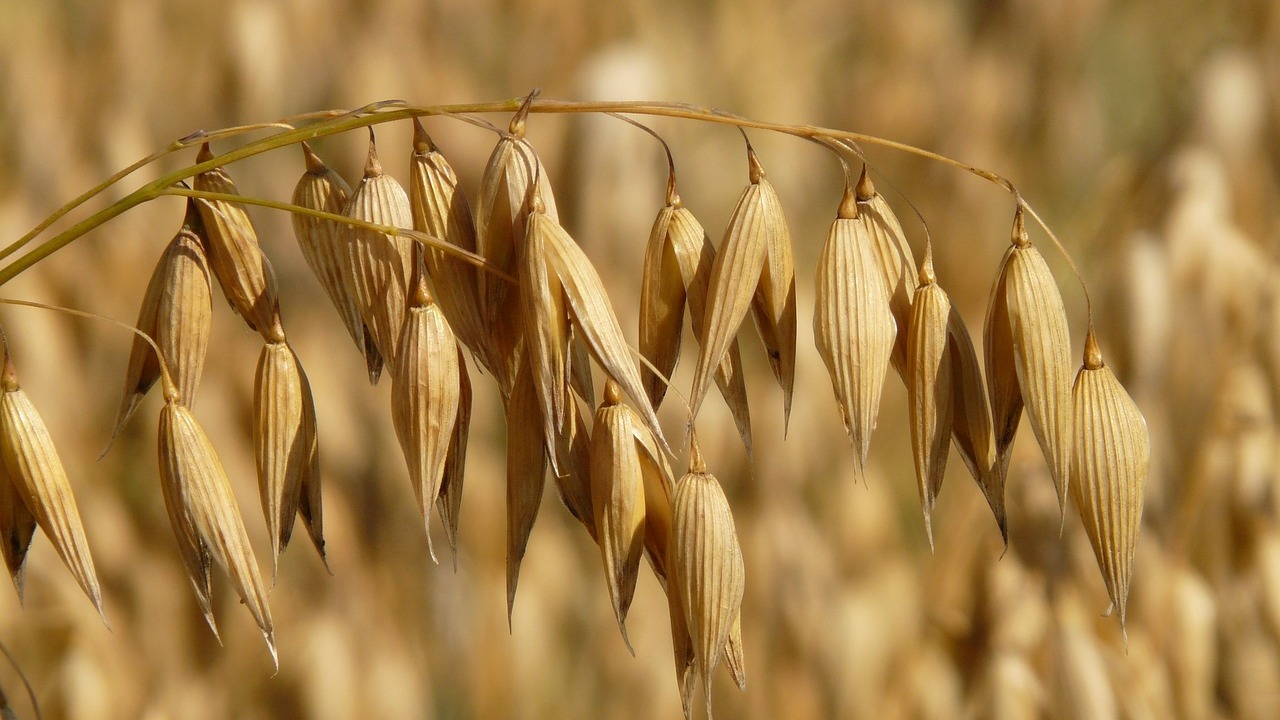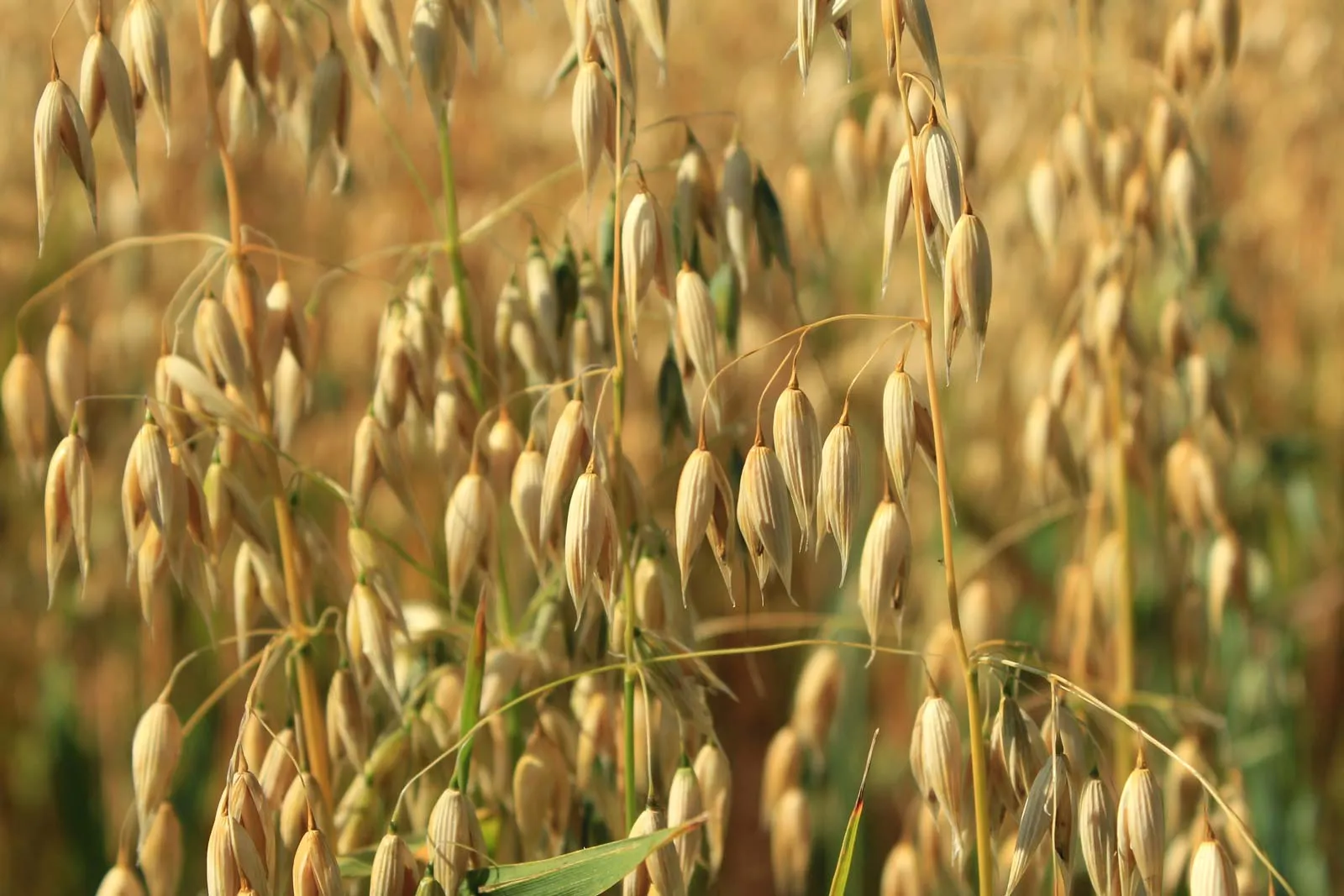Overview
Oats are one of the most popular breakfast products in the whole world that contains high nutritional value and variety. Whether it is oatmeal or granola, oats are present everywhere, but have a question ever occurred to you: what is the origin of oats?
This paper will discuss the source, production, harvesting and processing of oats giving us an in-depth view of how this simple grain gets to your table.
Origin of Oats Botanical
Oats are cereal grains also called scientifically as Avena sativa. Oats are grasses belonging to the family Poaceae. Agriculture Oats were not the main food source in antique agriculture as they were with wheat or barley.
Rather they began as a weedy in wheat and barley crops. After some time, farmers saw their resistance and their tolerability to rougher weather, mainly colder and wetter, and started purposely planting them.
Historical Background
The first presence of wild oats has been found in ancient locations in the Middle East, yet oats were domesticated far later compared with other grains such as wheat and barley. The earliest known cultivated oats are thought to have originated in southern Europe (including modern Germany and Switzerland).
Oats did not adjust to the dry, hot conditions in the Fertile Crescent as wheat had done and were more adapted to cool, wet areas. That is why oats began to serve as the staple grain of Northern Europe and especially Scotland, Ireland and Scandinavia.
Where Are Oats Grown Today?
In today’s world, oats are grown across many countries, but the leading producers include:
1. Russia
Russia is the biggest producer of oats in the State. It has huge fields and a cool climate that is perfect to plant large quantities of oats.
2. Canada
Canada exports high quality oats, Canada Prairies especially in the provinces of Manitoba, Alberta and Saskatchewan offer good conditions to oats farming.
3. United States
Oats are chiefly produced in the midwestern states like Minnesota, North Dakota and Wisconsin in the U.S. But the farming of oats has fallen in the years due to the increase in economic production of corn and soybeans.
4. European Countries
Other countries such as Poland, Finland, Germany, and the UK equally produce large quantities of oats which they consume and also export them.

Ideal Climate and Soil for Growing Oats
Oats love a cool damp climate and this is the reason why they are common in northern hemisphere. They do not thrive well in hot dry weather as some other grains. The optimum temperature of their growth is 15 to 25 C (59 to 77 F).
Concerning soil, oats grow in well drained, loamy soils of medium fertility. Their adaptation to varied growing conditions is another advantage since they are tolerant to acidic soils than most other cereals.
What Do Carrot Sprouts Look Like?
The Lifecycle of an Oat Plant
To understand where oats come from, it’s essential to look at their lifecycle, from seed to harvest.
1. Planting
Depending on the variety of oats, it is either planted in spring or in the fall. Spring oats are sown when the soil can be planted and winter oats are sown in fall and harvested in following summers.
2. Growth Stage
Oats mature fast, with their growing period taking about 60 to 75 days. The plants grow up to 2 to 4ft tall and produce narrow leaves and seed heads which are referred to panicles.
3. Pollination and Flowering Flowering
Oat flowers are tiny and auto pollinating. They flower between 5 and 7 weeks of planting.
4. Harvest and maturation
The harvest happens when the plants turn golden brown and when the grains become hard and dry. With the oats, modern farms have the combined harvesters where they cut, thresh, and clean the oats simultaneously.
Post Harvest
Raw oats harvested from the field are not immediately edible. They go through several steps:
1. Cleaning
The threshed oats are separated in order to get rid of foreign objects such as stones, leaves among other grains.
2. Hulling
A hull is the outer layer on oats that cannot be eaten. Through a mechanical process this is separated, leaving the groat, or oat kernel.
3. Kilning
This is done to stabilize the natural oils using steaming or roasting the groats. This works to extend shelf life and also increases the flavor.
4. Cutting, Rolling, or Grinding
Processed groats can be turned into:
- Steel-cut oats (chopped into pieces)
- Rolled oats (steamed and flattened)
- Instant oats (pre-cooked and dried)
- Oat flour (finely ground oats)
Each type varies in cooking time and texture but retains most of the original nutrition.
Oats in the Food Industry
Oats are incredibly versatile. They are used in:
- Breakfast cereals
- Granola bars
- Baked goods
- Smoothies
- Meat substitutes (as binders)
- Oat milk (a popular plant-based dairy alternative)

Nutritional Value of Oats
One of the reasons oats are so widely loved is their nutritional profile. They are a rich source of:
- Fiber (especially beta-glucan, which lowers cholesterol)
- Protein
- Iron
- Magnesium
- Antioxidants
They are also gluten-free, making it suitable to those intolerant of gluten (but they can be intermingled in processing and are not necessarily safe unless carried with the label of being a certified gluten-free product).
Environmental Benefits of Growing Oats
Oats are a relatively sustainable crop:
- They consume fewer amounts of water than rice or almonds.
- They assist in enhancing the soil health whenever incorporated in crop rotation.
- They minimize the use of chemical fertilizers since they contain nitrogen-fixing effects.
Moreover, plant-based products, such as oat milk, in which oats are utilized, are a result of the overall efforts on the shift to sustainability in agriculture.
Fun Facts About Oats
- The original oats consumers were horses and animals.
- The Scots took oats as a staple food where they were cooked in porridge, into biscuits, and even haggis.
- In farming, oat straw (the remains after grain gathering) is regularly used as animal bedding.
Conclusion
Now that we have found out enough about oats, where did they come from? Complex as origin is the result of ancient agricultural development, close growth in the cool climes, and present-day farming equipment. Oats have come a long way, since they were a wild grass to being served in breakfast tables all over the world.
No matter how you love them as the steel-cut oats or savour them at your favourite oat milk latte, each spoon of the oats has a story to its name about nature, food, and the cleverness of the human race.
FAQs
Q: Is oats the same with oatmeal?
A: The whole grain is called oats and oatmeal is a name that is commonly used to refer to the process that cooked oats are processed.
Q: Does oat contain gluten?
A: Yes, oats are naturally gluten-free but have to be processed in gluten free plants to try and eliminate cross-contamination.
Question: do they grow oats in home farms?
A: Yes, they require a lot of space, light and fertile soil. They have increased chances of being grown in large farms as they yield largely.

